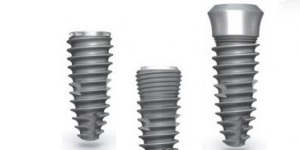
عوارض حائز اهمیت ناشی از دندانپزشکی ایمپلنت
2015-09-09
عوارض دندانپزشکی و انتشار عفونت در ایمپلنت
2015-09-12The necessity for the former complicated preprosthetic surgical procedures to facilitate the partial dentures has recently been decreased with the widespread construction of implant-supported prosthesis. Nevertheless, the alveolar deficiency that impedes the insertion of dental implants makes a number of similar reconstructive procedures inevitable. The posterior maxilla is one of the most challenging anatomic locations for the implant placement that requires adjunctive surgical procedures. This special issue covers leading researches and reviews on this topic that we believe would contribute to clinicians
An increased osseointegration rate with the improvement of the surface characteristics of dental implants resulted in a numerous successful reports for the implants shorter than 10 mm
Riben and A. Thor have published their review on “graftless augmentation procedures” which became a popular topic on sinus floor elevation, regarding a conventional surgical approach for the posterior maxillae. Their study entitled “The maxillary sinus membrane elevation procedure: augmentation of bone around dental implants without grafts—a review of a surgical technique” includes the technical details of the procedure
the use of short implants in the maxilla is still debatable especially for the single-tooth replacements due to its porous nature. D. Lops et al. compared the clinical success rates for 8 mm. Implants with that of 10 mm. In their long-term study entitled “Short implants in partially edentulous maxillae and mandibles: a 10 to 20 years retrospective evaluation”. In general, they declared similar success rates for 8 mm and longer implants. The results of this study revealed that the use of 8 mm implants seems to be safe in the posterior maxilla






